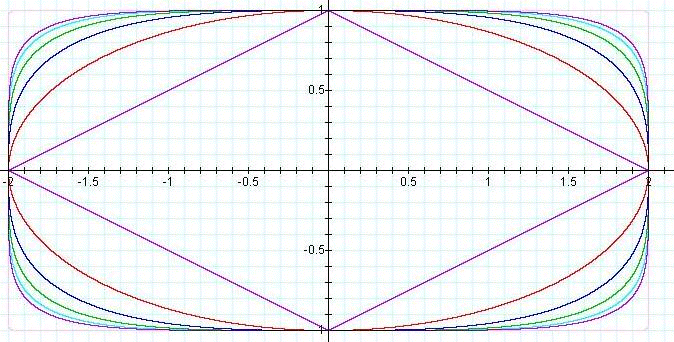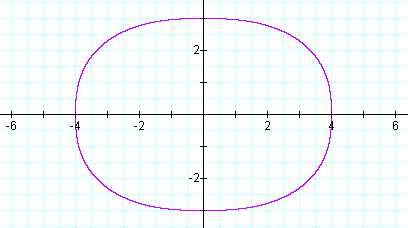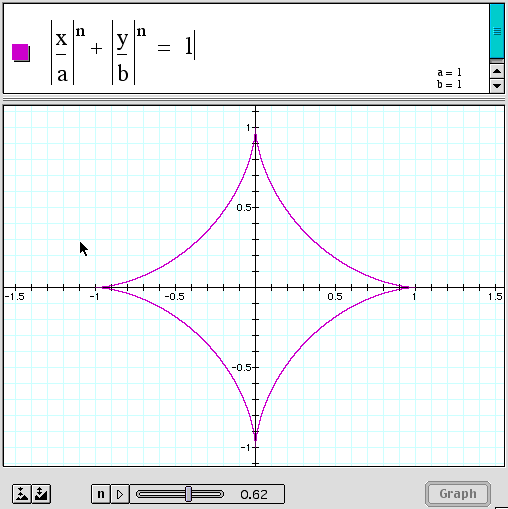

The study of conic sections is common in high school Algebra
II and Analysis and, indeed, is a Georgia Quality Core Curriculum
requirement for those courses. This page offers resources for
an extension or enrichment of the topic of ellipses.
where n is any positive real number. The standard form for
an ellipse is immediately recognizable when n = 2.
Find more about Gabriel Lame' here
When n = 2 and a = b, it should be obvious that the curve represents
a circle with radius a (=b), so for our purposes, we consider
the circle as just a special case of the ellipse.
What if n takes on some value other than 2? An easy and appropriate tool for investigating this question is Graphing Calculator for the Macintosh (also available with reduced capabilities for the IBM-compatable as NuCalc from Pacific Tech ) or the freeware program for the IBM, Winplot from Rick Parris at Philips Exeter Academy.

As you see, the members of this family of curves are
all "ellipse-like", but only the red curve is a true
ellipse. For n > 2, the curves are known as super ellipses
and have as their limiting case the rectangle formed by the lines
|x| = 2 and |y| = 1. The faint lavender curve in the figure above
is the graph of .
The term super ellipse was coined by the Danish artist, author, designer, and mathematician Piet Hein in the 1970's. He used a super ellipse with n = 2.5 as the design for tabletops and windows. His preferred choices for a and b in the Lame' equation were in the ratio 4:3. The graph is shown here:

Piet Hein is as well known in Scandinavia as is Hans Christian Andersen and has streets, parks and buildings named for him in several major cities. When asked to design a plaza for the city of Stockholm, he used his super ellipse as its basis, enhancing traffic flow as well as creating an estheticly pleasing fountain.

Hein also marketed a three dimensional version of his super ellipse, which he called a super egg. The super egg is formed by rotating a super ellipse about its longer axis and is interesting because of its remarkable stability when balanced on its end. In the 1970's wooden models were popular in Europe and today, items such as this Stress Egg are available.

